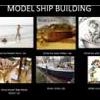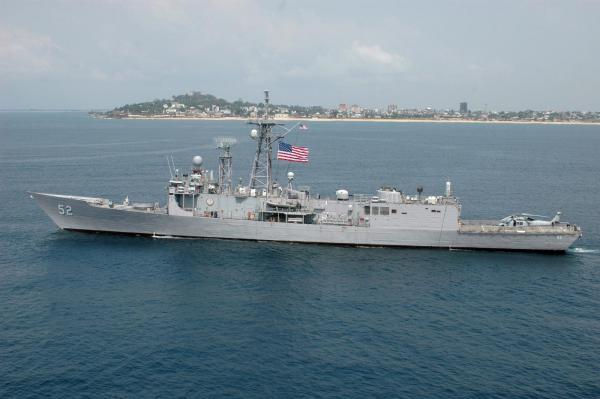-
Posts
722 -
Joined
-
Last visited
Content Type
Profiles
Forums
Gallery
Events
Posts posted by capnharv2
-
-
Looks good Dave (both of them)! Is that a Stevenson Weekender?
-
My compliments sir! A fine job on the horseshoe!
Regarding finish, another option would be to stain the planking black. Or use ebony (a real challenge).
Harvey
- GLakie, mtaylor and CaptainSteve
-
 3
3
-
Well, Isopropyl beats dynamite for removing planks-and it's cheaper

Harvey
- mattsayers148, Jack12477, Canute and 4 others
-
 7
7
-
Great idea for the horseshoes CaptainSteve! I'll drink to that!
Harvey
Although one thing I wonder is how to copper plate over them. I don't know if I've seen the shoes and copper on a model before. . .
- GLakie, mattsayers148 and CaptainSteve
-
 3
3
-
Aye CaptainSteve, it's good to see you back working on her!
With your questions about 5 window vs 6 window sterns and the yellow stripe, I wonder if you plan to open up the gun deck or use the dummy cannon? Maybe you've said it and I missed it. That's one of the few regrets I have on my Connie (not building the gun deck). Well, that and all the mistakes that I've made and swept under the carpet.
Thanks,
Harvey
- CaptainSteve, GLakie and mattsayers148
-
 3
3
-
Surprise? As in HMS?
Harvey
- GLakie, CaptainSteve, mattsayers148 and 1 other
-
 4
4
-
Captain Steve,
If you have to double up lines on one pin, that's probably a good idea. It's also a good idea to have the lines that need to be let go first on top.
It's also a good idea to think through where your lines will lead to the pins to avoid fouling-either on deck or aloft. Few things ruin your day more than a sail that won't come down in a squall because somebody tied the weather backstay on top of the halyard.
Just a thought . . .
Hope that helps.
Thanks,
Harvey
- GLakie, dgbot, CaptainSteve and 2 others
-
 5
5
-
Mark,
While I agree there's no hard and fast rule on more than one line on a belaying pin, there probably are some that you wouldn't want to double up on (halyards, sheets, etc).
My limited experience tells me that the line you need to release immediately is the one with 3 others belayed on top of it

Thanks,
Harvey
- GLakie, mattsayers148 and CaptainSteve
-
 3
3
-
Fantastic work on the torpedo tubes!
-
Wiley,
Here are some YouTube videos that may be of help:
https://www.youtube.com/user/paulthecadtracey/videos
If you're interested in 3D printing, I suggest holding off a bit until you have a better understanding of TurboCad and its capabilities. Regarding 2D vs 3D, I was used to using CATIA V5 at work, so we were always creating 3D models. But years before, I used this tool called CADAM-strictly 2D, and it worked fine for what we needed. When I started looking at TC, I was very interested in the 3D aspects of it. Since then, I've found that building TurboCad models in 2D works well for me.
A couple books you might find intersting are:
HMS EURYALUS (36) 1803
by Allan Yedlinsky
and Wayne Kempson (yes, that Wayne )
)and
The Naiad Frigate (38) 1797
Volume 1
by Edward TostiBoth books highlight the use of Turbocad to produce drawings for their associated scrathbuilt models, and I've found both to be very helpful. Both are available through SeaWatch Books (just down the road from you)
Hope that helps.
Thanks,
Harvey
-
Have you gone to the TurboCad forum?
They are a very helpful group. Also, some of the TurboCad experts on this forum are on that forum
Hope that helps.
Thanks,
Harvey
-
Dale,
I'm glad the deck isn't glued on yet. There are some things that could use fixing. That dip amidships shouldn't be there.
It looks like some of the bulkhead do not follow the deck camber or sheer line.
A couple of ideas here.
-make a template (from the plans) that follows the deck camber at the top of every bulkhead. Lay that template on top of your installed bulkheads. My hope is that the bulkheads farthest fore and aft are too flat, or too high at the outboard ends.
-make another template of the center keel where the deck attaches. Lay that template along the center keel. If I recall, the top of the center keel should be a long smooth curve. The center keel on my LH seemed to be set of disjointed straight lines.
Does the deck look similar on both sides? If so, the bulkheads may be sitting either too low or too high (or both). If the deck/bulkhead joint doesn't look the same on both sides, the bulkheads are twisted to port or starboard-maybe both.
I've struggled with similar problems for years. If the bulkheads are glued in place, you can correct these problems by taking material off the high bulkhead tops or putting a filler piece on the tops of low bulkheads.
Hope some of this helps.
Thanks,
Harvey
-
Dale,
If the side view of the hull (showing the bulkheads) is lined up with the plan view (the one you show in your pictures), you can extend the lines of the bulkhead faces up to the plan view to check the locations of the bulkheads. It looks like you're close.
One comment from earlier regarding using a chisel to fair the bow. I'm not sure I would use a chisel to bevel or fair that area. The filler, bulkheads and keel are all plywood, and that will have the ply grain running in multiple directions. Unless you have a super, super sharp chisel and know how to use it, The chisel (if I were using it) would dig in and gouge the plywood, making a fair line hard to achieve.
I recommend 80 grit sandpaper on a sanding block for fairing. It takes more time and effort, but I think it's more controllable than a chisel-unless, like I said, you have a sharp chisel and know how to use it.
I really like the care that you're taking at this stage to get the supporting structure correct. That will pay off big time when you start planking the hull.
Hope that helps.
Thanks,
Harvey
-
Hi Dale,
I echo CapnSteve's comments. One thing I remember from building (or butchering) my LH was that the instructions are not helpful. You have Mastini's book-that will be more helpful than the instructions (in general)For these instructions-
"With a half round file sharpen with extreme care, at port and at starboard , false keel no 1, reinforcements number 11, 12 and 13, as well as frames number 2 and 5. Follow the same procedure for reinforcements number 21 to 27 and stern frames number 6 to 10.
They're describing the fairing of the keel and bulkheads. Here's a suggestion-
If you haven't faired the bulkheads, reinforcements and keel (or even if you've started), paint the edges with a black magic marker or Sharpie. Always keep a black edge on the part you're shaping-this will help keep the overall shape of the hull (I know I've gotten too enthusiastic before and ground way too much off). Take a piece of inner planking material (I think it's 2mm limewood) and press it against the bulkheads-this will help you see how much needs to come off each bulkhead (or needs to be added back on). When you do this, don't hold it against adjacent bulkheads. press against, say, the center bulkhead and one several forward or aft.
Don't worry about the half round file if you don't have one. Sandpaper and a sanding block will do the same thing.
"Bevel carefully the edges of the frames. You will realize that the more curvature the hull takes the more would you rough-plane. With the planking strake number 28 check the correct alignment lengthwise and breadth wise the hull. This way you will know up to where you have to bevel for the correct placement of strakes number 28. At once take the opportunity to file the excess of the decks."
I'm not sure what they're talking about here, other than fairing the hull as you've been doing. I don't know what the significance of strake 28 is but I suspect it's one close to deck level, and that's why they bring it up.
My poor memory is coming back a little. I recall that planking the stern was really hard due to the tapering of the top planks just below the deck. I suggest looking at build logs for clipper ships like Ed Tosti's Young America (start looking about page 71 for his planking of the stern).
Also, look at the articles on the NRG side of this site
http://modelshipworldforum.com/ship-model-framing-and-planking-articles.php
They may help too.
And please continue to ask questions-you've got hundreds (maybe thousands) of ship modelers all over the globe who want to help you succeed.
Sorry for the long post-I hope you find something helpful here.
Thanks,
Harvey
- CaptainSteve and mtaylor
-
 2
2
-
-
I built Le Hussard many years ago. I don't have any great insight, but you appear to be on the right track.
Have fun and keep posting!
Thanks,
Harvey
-
Note the painting shows the headsails billowing, but the picture shows the headsail flat? Harland notes that, when running dead downwind,
the headsail will almost always be blanketed by the square sails and studding sails.
I've been fortunate to never have a spinnaker go that far aft on me. Sounds like a broach waiting to happen . . .
Thanks,
Harvey
-
Jay,
Seamanship in the Age of Sail by John Harland has an entire chapter devoted to studding sails. It sounds like studding sails on the main course fell out of favor around 1800, although there are some interesting sketches of a furled main course and studding sails set outside of it.
Interesting reading. I strongly recommend it.
Thanks,
Harvey
BTW Bill, your Mamoli Constitution is magnificent!
- CaptainSteve, robnbill, GLakie and 1 other
-
 4
4
-
I read about this somewhere Jay. I think, that because studding sails are mainly downwind sails, that a main studding sail would mess up the downwind balance of the ship. Since there's no lower mizzen sail, and because it would probably cause adverse weather helm, I suspect mizzen studding sails would not be helpful either.
That's what I recall at least.
Thanks,
Harvey
-
Hi Richard,
I'm no expert at this, but I have a couple thoughts. . .
-Is it possible that the copper has some protective coat on it that hasn't come off when cleaning? See if you can scratch up the surface more.
-Have you tried putting solder on the copper sheet and tube individually (not soldering them together)? If the solder won't adhere to one or the other you've found the culprit
-How long do you leave it in acetone or alcohol before trying to solder? I've found that it may work better leaving it in for 15-20 minutes, then let it air dry.
-I just looked up their melting temperatures. Brass-1700 deg F, Copper-1981 deg F. So, it may be that the copper isn't getting hot enough
-An old article I read on silver soldering said the parts have to be in direct contact with each other. With the paste or wire, it's possible that the brass is more forgiving on gaps than the copper. I've been silver soldering with silver sheet, and it will not flow to the joint unless the parts are touching.
Hope that helps.
Thanks,
Harvey
-
-
-
-
- WackoWolf, GLakie, CaptainSteve and 1 other
-
 4
4




Cutty Sark by NenadM
in - Build logs for subjects built 1851 - 1900
Posted
Hi Nenad,
I hope things get better for you soon.
Harvey